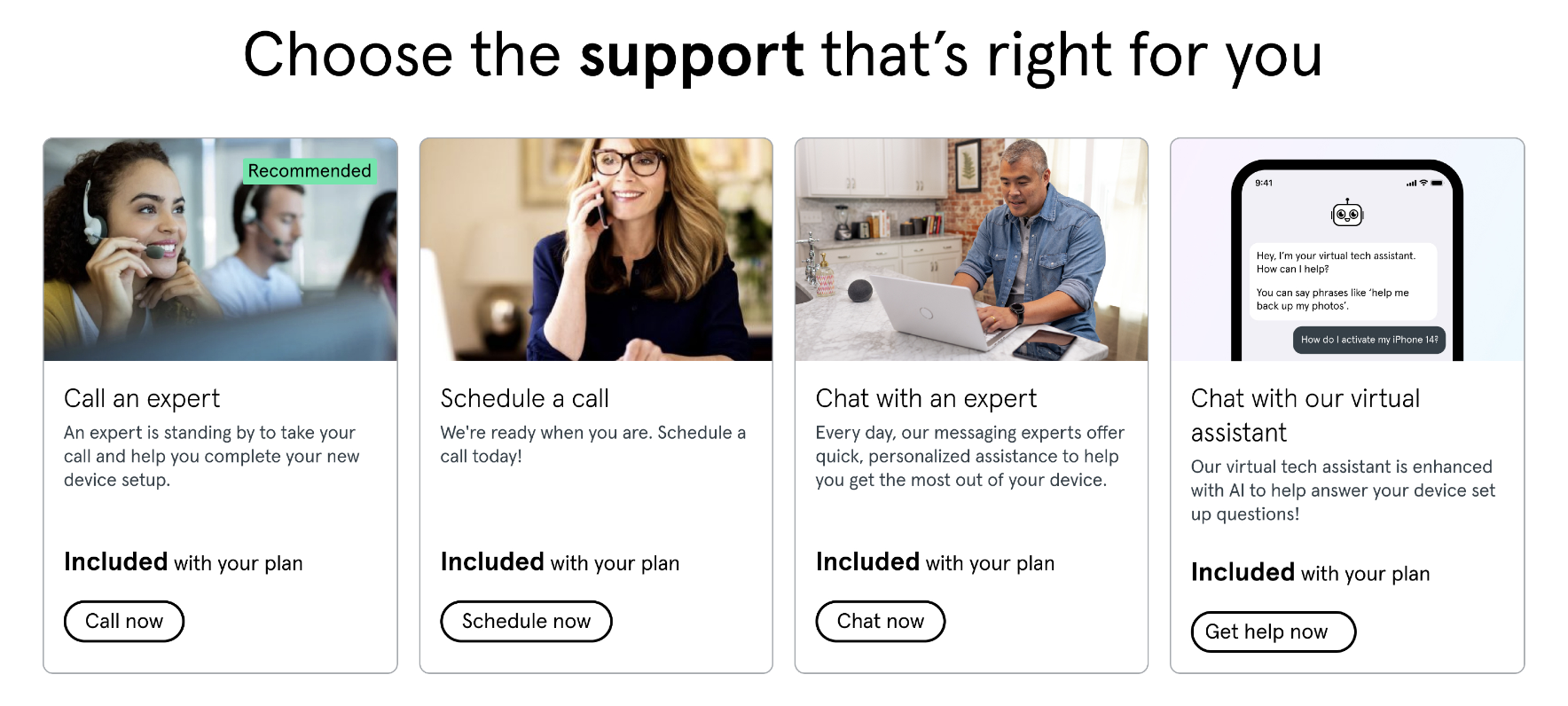My approach allows me to see patterns where others see complexity. One of my top 5 Clifton Strengths is Strategic—and according to GALLUP, you can’t teach this skill.
Chat with a Human v. Chat with AI: Think Aloud Tests to Inform UX
Problem
A large national tech care and repair company needed to direct users from it’s tech support landing page efficiently to various live tech support channels (call, schedule a call back, chat with an expert, chat with AI). While designs existed to do so, insights on the attitudes and perceptions of each option were limited. For example, in context of renewed attention to AI chat bot technology, did customers understand what we meant by the legally required phrase, “virtual assistant”? What was their impression of the word “expert”?
Solution
To determine what someone would expect if they were to choose any respective option (call, schedule a call back, chat with an expert, chat with AI), I crafted test plans and launched think aloud usability tests to find out. On the UserZoom platform I conducted both mobile and desktop usability tests with 30 participants—carefully noting word choice as potential consumers described their options as they completed required tasks.
Impact
Learnings informed chosen wording for the landing page in question. Insights also established UX Design principles for all “front door” company tech support experiences such as for the company’s home page chat bot and client experiences for Google and Verizon.
Card Sorting to Inform Navigation
Problem
A large national tech care and repair company was launching new product offerings that required a foundational understanding of how the general population conceptualizes groupings, categorization and relationships with and between laptop/desktop computers, tablets, printers, TVs, home appliances like dishwashers and washer/dryers, and other connected home devices like smart speakers and doorbells.
Solution
I selected methods and ran a comprehensive set of card sorts to uncover patterns in product category associations. Chosen methods included a) unmoderated open and closed card sorts (40 participants), and b) moderated think aloud open and closed card sorts (6 participants). Both included post-test questions to probe and uncover mental model themes.
Impact
Mental models informed product homepage information architecture, arrangement of product categories in claim flow UX and servicing, core product marketing strategy, and future product design and marketing research.
Let’s connect
There’s a whole lot more. Contact me on LinkedIn for more detailed case studies.


